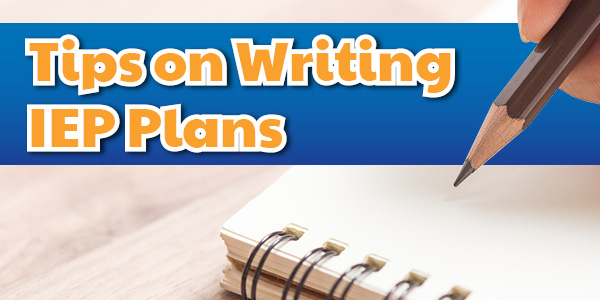Tips on Writing IEP Plans
If you suspect your child has a disability and needs special education services, you can make a referral to the school for an Individualized Education Program. Each school has a referral system that explains how that is done. You should do this in writing and keep a copy.
As part of the referral process, the school can provide interventions and instruction services. If the child does not make adequate progress, a referral for special education services is made. At this time a meeting will be held to look at the kind of evaluations needed and the parents/guardian must sign permission for these to take place.
If your child has a current IEP:
- Make sure you have a copy, ask the school if you don’t have one.
- Review the information in each section so you are familiar with what your child is working on now.
- Think about what needs to be in the next IEP.
There are four main parts to look at in developing an appropriate IEP:
1. Present Levels of Performance
- Present levels should address all areas of need (communication, physical, academic, social/emotional).
- They should tell specifically what the child is having problems with and what things work for him.
Examples:
Poor: Dan is writing below grade level.
Better: Dan can write a simple sentence with correct capitalization but struggles with questions and exclamations.
By knowing what Dan can and cannot do, we have a place to start to write goals. This baseline data should come from objective assessments, informal assessments and input from the parents and teachers.
2. Goals and Objectives
- These come from the needs that the team determined in the first section.
- Goals and objectives provide a road map of what the child is working on and should be making progress on during the coming year.
- These can be academic, social and behavioral.
- The school must be able to objectively measure the goals and objectives so everyone will know if the student is making progress.
Examples:
Poor (too broad and general): Alexis will improve her writing skills.
Better: Alexis will be able to write a five-sentence paragraph with correct punctuation and capitalization.
3. Supports and Services
These are all the things the team thinks the child needs in order to:
- Make progress on his annual goals.
- Progress in the general curriculum.
- Participate in nonacademic and extra- curricular activities.
- Be educated and participate alongside children without disabilities.
(Supports and services should be based on what the student needs, not on what is available.)
4. Placement
This is the place – classroom(s) and other school environments – where the child can best work on her goals. To the maximum extent possible, a student with disabilities should be educated in general education classrooms with supports and services.
This is called the least restrictive environment.
Removal happens only after all supports and services have been tried and the student cannot achieve her goals in that environment.
This should be determined by the full IEP Team. The Individuals with Disabilities Education Act requires that the child’s placement be based on the student’s IEP, be determined at least annually, and be as close to the child’s home as possible.
Parents should receive progress notes on how their child is doing on his IEP goals as often as the school gives out report cards to all children. If there is a problem, parents can call a team meeting at any time throughout the year.
Should the parents disagree with the IEP, they have recourse to IDEA’s procedural safeguards, which include mediation and due process procedures, as a way of resolving conflicts. A parent of a child with a disability can also file a state complaint.
Info: Kentucky Protection & Advocacy: (800) 372-2988 or visit www.kypa.net.

